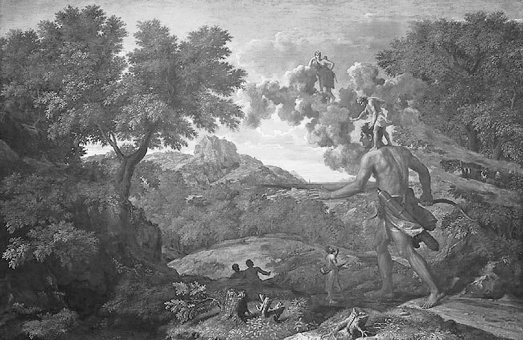1
FIRST, THERE WAS CLASSICAL PHYSICS
If I have seen further it is by standing on the shoulders of Giants.
Issac Newton, Letter to Robert Hooke, February 1676
Figure 1.0. “Nicolas Poussin (1594–1665): Blind Orion Searching for the Rising Sun (24.45.1)”. Date: 1658. In Heilbrunn Timeline of Art History.
New York: Courtesy of The Metropolitan Museum of Art, 2000.
In this picture, based on Greek mythology, blind Orion a hunter has set Cadelion, a servant, on his shoulders as a Guide to the East where the rays of the Sun would restore his eyesight. Dwarfs standing on the shoulders of giants (Latin: nanos gigantium humeris insidentes) is a Western metaphor with a modern-time interpretation: “One who develops future intellectual pursuits by understanding the research and works created by notable thinkers of the past.” This metaphor, first recorded in the twelfth century and attributed to Bernard of Chartres, a twelfth century French Platonist philosopher, was famously used by seventeenth-century scientist Isaac Newton. Newton himself was rather modest about his own achievements, when in his famous letter to Robert Hooke in February 1676, he wrote “If I have seen further it is by standing on the shoulders of Giants”.

In This Chapter
1.1 Introduction
1.2 Physics and Classical Physics
1.3 The Classical World of Particles
1.4 Physical Quantities
1.5 Newton’s Laws of Motion
1.6 Rotational ...

